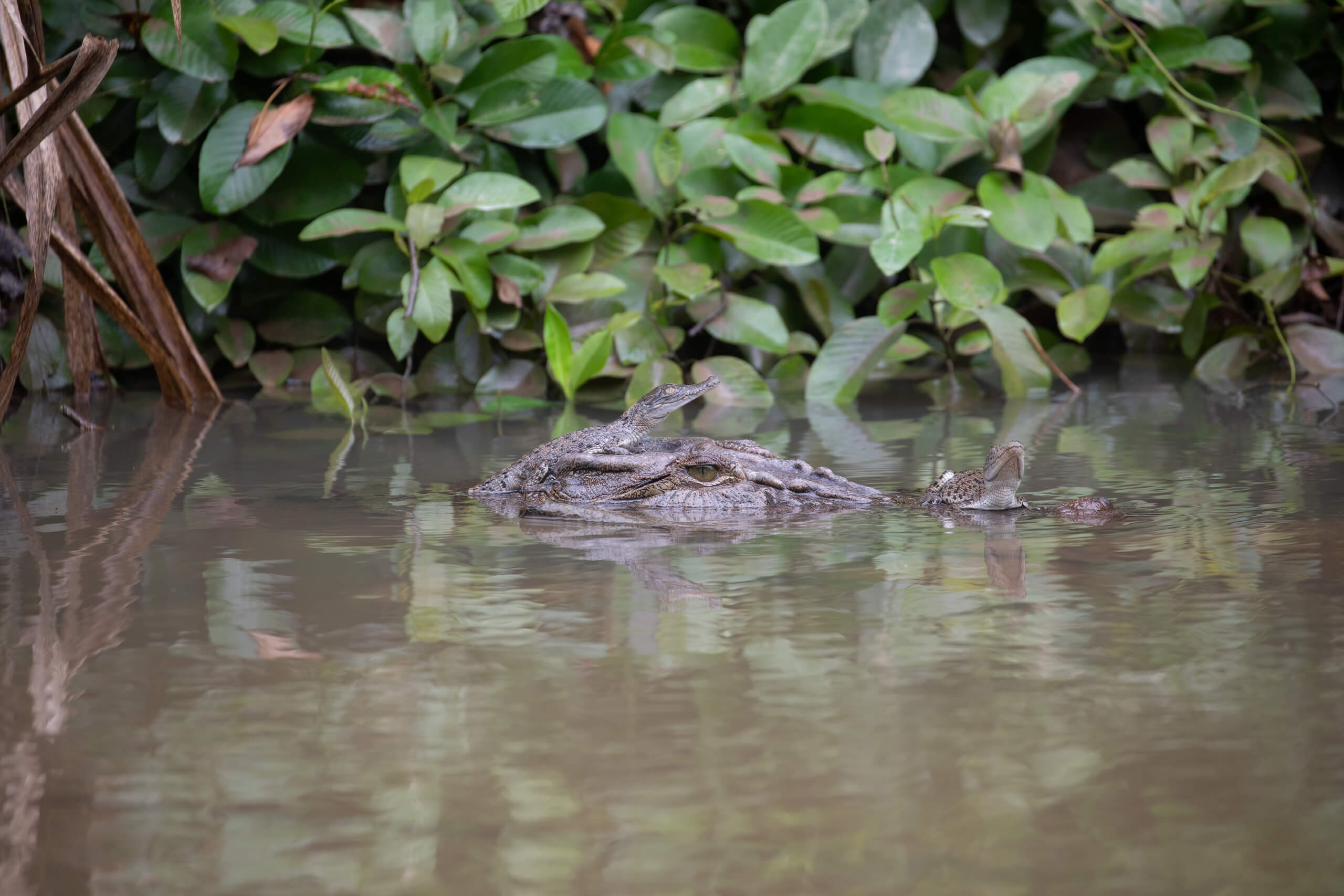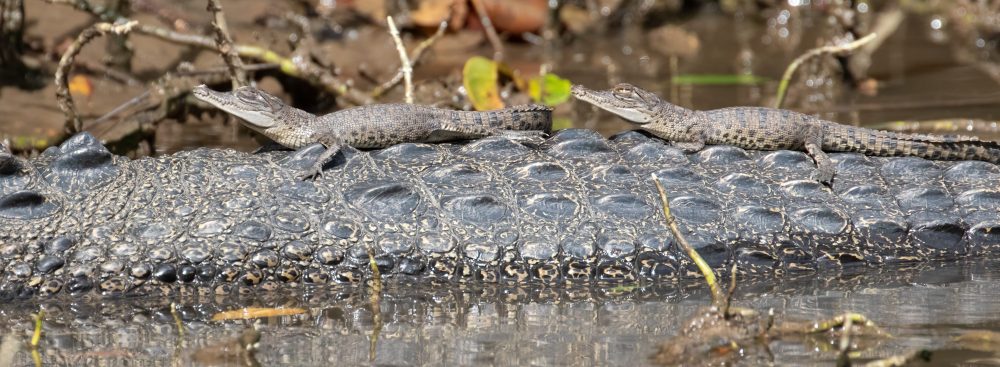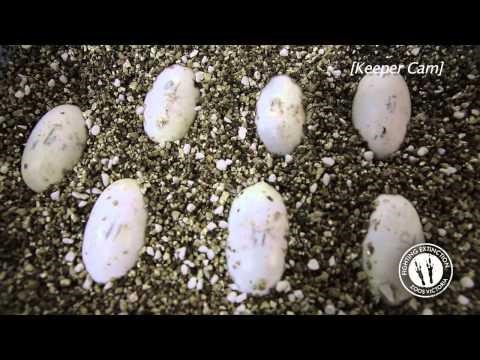Crocodile Mums
Is there a softer side to these ancient predators?
We’ve all seen the reports of ‘problem’ Saltwater crocs in Australia. What the public or government labels as a ‘problem’ croc is just a saltie acting and behaving like they are designed to.
Or like they have for 200 million years.
It’s our unwillingness to live alongside these animals that has them considered problems. Relocating doesn’t work with crocs, they like their homes and they just come back. So they’ll either be euthanised or rehomed to croc farms, where they’ll be killed for their skins or meat, and sold to luxury brands. There are major issues with removing crocs from an ecosystem, conversely resulting in more attacks, but it’s still done because people want to use the same habitat, and think removing crocs makes it safe.
Most of what we see in the media is about crocs labelled as problematic, but it’s far from the full story of crocodiles.
Hunted to near extinction in the 1970’s, their populations are now recovering so we’re just starting to scratch the surface of knowledge about these ancient reptiles.
It may be surprising to learn that crocodiles have a gentle side, seen forming bonds with infants, mates, and siblings over many years. Even more surprising perhaps, is the care given to their offspring. It’s likely that crocodiles have more complex lives and minds than expected, and that crocodile mums show better parenting than all other reptiles so far!
It all starts with flirting.
Turns out our Salties (Saltwater or Estuarine crocodiles) aren’t as anti-social as we once thought. A research group from Australia tracked the movements of saltwater crocs through 120km of natural habitat and discovered that they cross paths frequently, often spending time with their known groups during the dry season in Northern Australia. Returning to familiar faces allows less fighting for resources or territory with strangers during breeding seasons so it makes sense. Interestingly though, they also found that some male-female pairs kept their connection for multiple years.
Are these “couples”?
We have no idea really. There’s not much research to say that crocs form long term partners in the wild, though research on crocs is very much in its infancy. American alligators were recorded as having the same mate over many years, and others have seen play-type behaviour in long term partners of Cuban crocodiles in captivity, showing at least some form of relaxation or familiarity with each other. Then there’s the adorable story of Scarface and Dusty-rose, who have been recorded snuggling through the Daintree for over 20 years! David White from Solar Whisper Daintree River Wildlife and Crocodile Tours maintains accurate IDs of crocs inhabiting the river and witnesses these long term bonds first hand.
Either way, salties catch each other’s attention through various displays we might think of as flirting, though probably quite different to how most humans flirt, maybe.
Males will grunt, growl and hiss towards a female, blowing bubbles to attract her attention. The female approaches the male if she’s interested, rubbing her snout on him, sometimes instigating playful chasing before raising her head out of the water in a submissive display.
A classic tale of boy-meets-girl.
Finding a safe space for her nest.
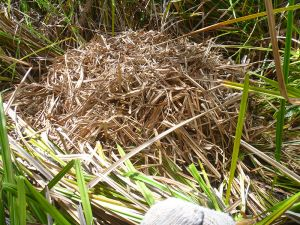
Saltwater Crocodile Nest
Source: https://environment.des.qld.gov.au/wildlife/animals/living-with/crocodiles/report-crocodile/glossary
Females take time to carefully pick the nesting site for their eggs. Some larger female saltwater crocodiles might travel up to 50km to select the perfect location, sometimes taking more than a month to choose a site. They can abandon sites if they determine a threat, and even learn from past experiences.
Once she chooses a location, she will either dig out a hole in the dirt and cover it with leaves, dirt and grass, as is the case for freshwater crocs, or create a mound of the same coverings if she’s a saltwater croc. This protects her offspring from predators, but is also vital for insulation. Like many reptiles, the sex of hatchlings is determined by environmental temperature, so mum needs to create the perfect temperature for her hatchlings to thrive.
From here, mothers will continue to fiercely guard their nest until hatching, somewhere between 80 and 90 days later in saltwater crocs. Taking an egg from her nest is likely to set mum off – growling and lunging to protect her infants.
The eggs have spoken!
Mum knows it’s time to collect her babies when they start calling from their eggs. Hatchlings will ‘vocalise’, signalling to other hatchlings it’s
time to open.
The laser-beam chorus of hatchlings catch mums’ attention, and she digs out the nest, nuzzling her snout into her new babies, or helping them open their shells.
It’s a precarious time for hatchlings, being prey to so many animals. Snakes, monitors, dingoes, birds of prey, and even other crocodiles wait to make snacks of these tiny critters, so mum is on high alert, and will keep this up for some time yet.
For a dose of cuteness overload, watch this awesome video of critically endangered Philippine Crocodile hatchlings from Zoos Vic.
Life beyond the egg.
Mum needs to get her hatchlings to the water, where they can start learning to forage and hunt for prey, though most won’t need to for a few weeks as they store some energy from the egg. Here they can hide in the murky waters, often under mangrove roots.
She grasps the wriggly reptiles in her mouth, then skillfully manoeuvres to the water to release them. Impressive considering the power in a crocodile’s bite!
Saltwater crocodiles have the highest bite force of any animal – measured up to a whopping 3,689 lbs (16,414 N).
Us tiny humans can get to maybe 200 lbs.
Mum will keep carrying the babies back and forth between water and land until they can do it on their own, though even after this time babies have still been witnessed climbing on mums back for rides.
For the first few months, mum continues to respond to both contact and distress calls. These calls may be specific to mother-infant or crocodile family groups, but the jury is out on whether mums can recognise her specific baby’s call amongst other juveniles.
A super interesting story emerged in 2002 from St Augustine Alligator Farm, a zoological park running since 1893. One sign of parental care in animals is deliberating providing food for babies, that is, not by accident. Crocs haven’t really been seen doing this, but keepers at this Alligator park may have. They recorded their Siamese Crocodile mum not only opening eggs to help release hatchlings, she allowed infants to feed from meat left in her mouth. The dad was just as gentle, allowing cheeky hatchlings to crawl into his mouth while basking, then just tipping them out gently when he’d had enough of them biting his tongue. It may have been by accident, it may not have been, but regardless it does show tolerance and a gentleness crocs parents have with their infants.
But we’re only just scratching the surface…
Of course, no one advises that we start riding crocs or having them over for dinner. They are massive predators capable of serious injury and death if we enter their territory so croc-wise behaviour is always needed, but that’s not the whole story of crocs either.
Crocs are vital for our ecosystem, and have inner lives we’re only just starting to get to know. Most of what we know is from observations in captivity, or people who have either lived or worked closely with them, so we still have so much to learn. I love to ponder what Johnny, one of our freshwater crocs, is thinking when he leans his body in to get a little scratch under his arm. Or what Brock, another freshie, is thinking when he follows us around from his enclosure, resting his head on a ledge behind us as if eavesdropping.
The truth is, we just don’t know, but isn’t it better to err on the side of caution? Isn’t it better to assume sentience, capable of intelligence, thoughts and emotions like the rest of us, than have a guess that they just don’t think or feel emotions and treat them like disposable pests or commodities for commercial gain? If we’re right, then we avoid unnecessary cruelty. If we’re wrong, then we avoid unnecessary cruelty.
It’s certainly an exciting time to see them rebounding from the brink of extinction and discovering what makes them tick!
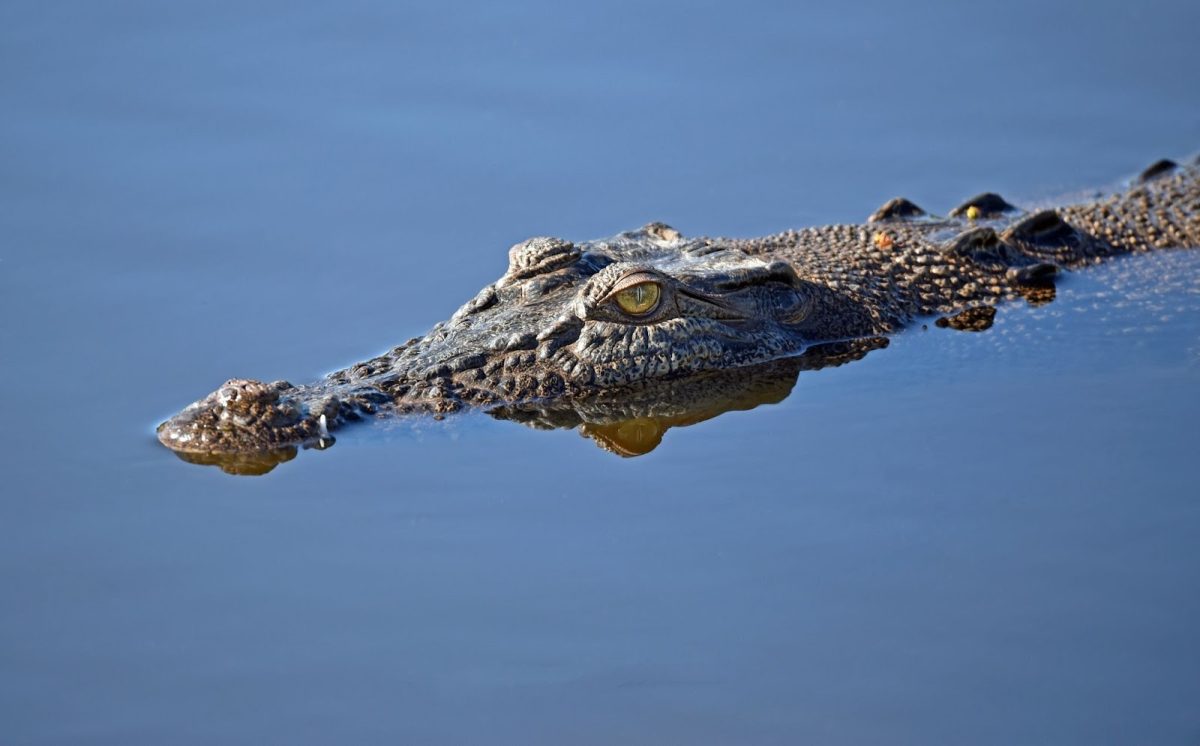
Saltwater Crocodile. Photo by David Clode on Unsplash
